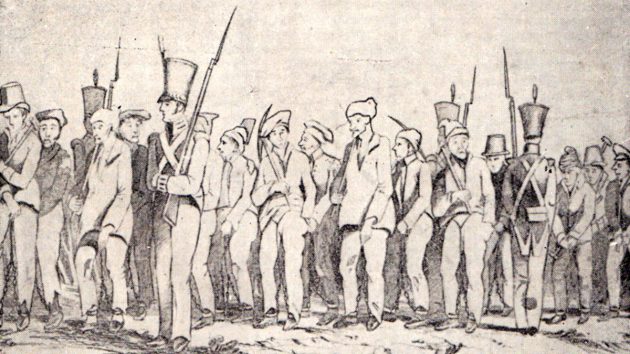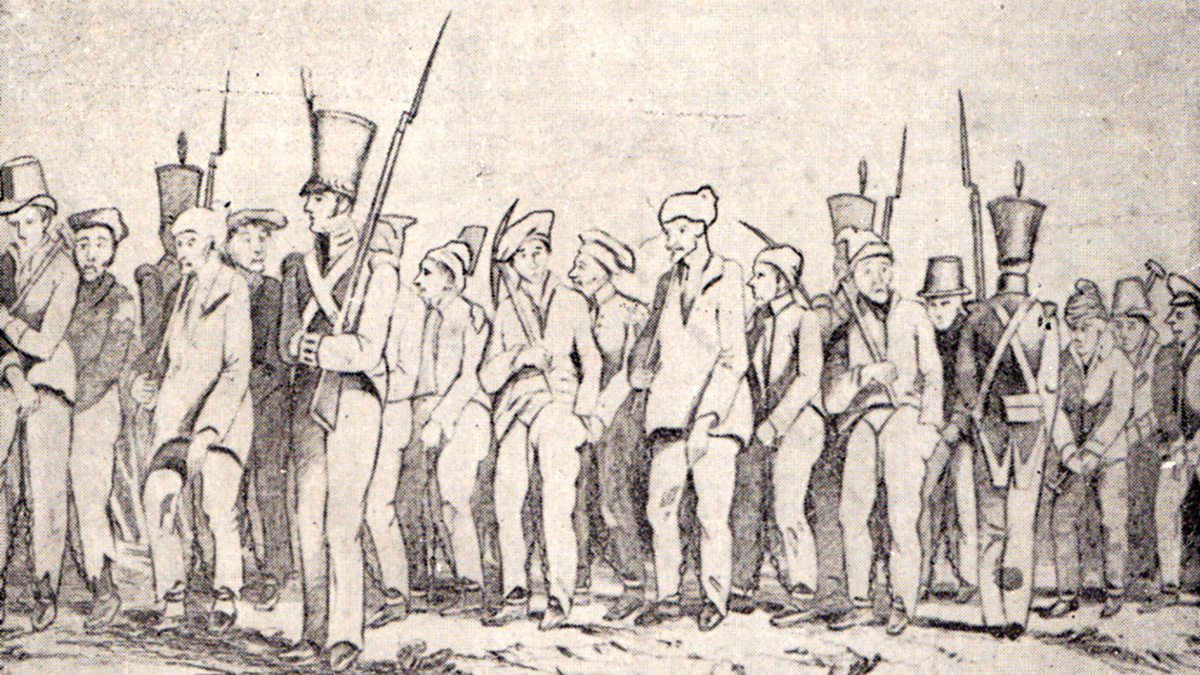If you were wondering what that noise echoing across Australia last week was, it was a cacophonous wailing and gnashing of teeth issuing forth from the exclusive Sydney harbourside suburb of Ultimo. The site of this clamour of bourgeois rage and despair was the Ultimo headquarters of Australia’s billion-dollar, taxpayer-funded leftist propaganda unit, the ABC.
The cause? The ABC was forced to admit that PM Scott Morrison was right.
When Morrison asserted that there was no slavery in Australia when it was settled, the ABC’s first response was to parachute in its pet fake-Aboriginal fake historian. Bruce Pascoe, exercising his characteristic disregard for such footling stuff as logic or evidence, gibbered that Australia was just as slave-y as an episode of Roots. Cheered by Pascoe’s trademark bullshit, the ABC sicced its “Fact Check” unit onto the case.
Bad move.
Because the evidence is so incontrovertible that even the ABC was forced to admit the unthinkable: Morrison was right.
Mr Morrison’s claim checks out.
His claim goes to the question of whether there was slavery when NSW was founded as a colony.
As harsh as the new settlement undoubtedly was, the preconditions for slavery — including the treatment of individuals as property — were not met, at least not in the early years of NSW.
Arthur Phillip, the first governor of the new colony, declared that among the first laws he would like enacted was that there could be no slavery and no slaves.
With the left’s characteristic cavalier disregard for the actual meaning of words, other taxpayer-funded mobs like The Conversation try to get around such inconvenient facts by shuffling the rhetorical shells and claiming that Australia experienced something “akin to” slavery.
But “akin to” is not the same as “is”. This kind of fallacy – shifting meanings – is deeply mendacious.
Convicts sent to NSW had many legal rights not typically afforded to slaves.
Although they were “lent” out to private settlers under a model known as the “assignment system”, unlike convicts sent to other parts of the world, they could not be privately traded.
Punishment could only be legally inflicted by the state, having firstly been ordered by a magistrate.
Convicts could, among other things, appear as witnesses in court and petition the governor.
They were freed after the expiry of their sentences, and their children were born free in the eyes of the law.
Moreover, convicts could, with some constraints, sell some of their labour to the free market, and were encouraged to grow food in their private time.
All of that absolutely disqualifies the claim of “slavery”.
Which doesn’t stop mendacious lefties from shuffling the peas and shells even more furiously.
Various commentators have pointed out that tens of thousands of Melanesian people were brought to Australia to work on sugar plantations as bonded labourers between 1863 and 1904 under a bonded labouring system known as “blackbirding” that could be viewed as a form a slavery (though this is debated by historians).
It has also been noted, including in the 2006 Senate report, Unfinished business: Indigenous stolen wages, that many Indigenous Australians were denied wages and forced to work in conditions akin to slavery.
There’s that weasel-word again, “akin to”. But, what is slavery, really?
The United Nations Slavery Convention, signed in Geneva on September 25, 1926, defines slavery as “the status or condition of a person over whom any or all of the powers attaching to the right of ownership are exercised”.
It adds: “The slave trade includes all acts involved in the capture, acquisition or disposal of a person with intent to reduce him to slavery; all acts involved in the acquisition of a slave with a view to selling or exchanging him; all acts of disposal by sale or exchange of a slave acquired with a view to being sold or exchanged, and, in general, every act of trade or transport in slaves”[…]
In the book The Fatal Shore, which explores the convict era, historian Robert Hughes was more expansive with his definition when analysing whether convicts could be compared to slaves:
“In theory, the social contract of slavery is simple, rigid and one-sided. It is pure power in action, rampant will. The master owns the slave: his work, his time, his person. Slaves are bought and sold; they are property. Their rights begin and end with their status as chattels. They do not have the right to negotiate, to set the tempo or length of their work, to organise collectively or to protest … Slavery is permanent and it perpetuates itself from generation to generation; slave parents beget slave children. When slaves are freed, it is an indulgence — or a revolution.”
In fact, the proscription of slavery was a founding principle of Australia.
In 1787, [Governor] Phillip set out details of how he intended the convicts would be treated following the fleet’s arrival in the new colony.
Among his many rulings was an edict which he said would take place from the moment of arrival: there would be “no slaves”.
“The laws of this country will, of course, be introduced in [New] South Wales, and there is one that I would wish to take from the moment his Majesty’s forces take possession of the country: That there can be no slavery in a free land, and consequently no slaves.”
That has never stopped axe-grinding activists, starting with the Molesworth inquiry of 1837 and continuing to the present, making goalpost-shifting claims about “a form of slavery”.

But the basic mendacity of this claim is underscored by the similar vehemence with which leftist historians and journalists argue the exact opposite when it suits. When journalist Michael A. Hoffman published They Were White and They Were Slaves: The Untold History of the Enslavement of Whites in Early America, the left-wing establishment were aghast. They heaped scorn on Hoffman’s thesis: that the almost-universal practice of bonded white labour in Colonial America was “a form of slavery”.
Yet, Hoffman is making exactly the same argument – and often with better evidence – as the leftists trying to smear Australia with the stain of slavery.
If Hoffman is wrong, then so are they.
Stuart Macintyre, a professor of history at the University of Melbourne, said although critics of the transportation system often likened convicts to slaves “they were not”.
“Their condition was less favourable than that of bonded labour (those who sold their service for an extended period) but they had civil rights denied to slaves, and these were tighter than had operated previously when convicts were sent to America (strictly sold to contractors who in turn sold their services over there),” Professor Macintyre told Fact Check in an email.
Jennie Jeppesen, an expert in early convict law from the University of Melbourne, said convicts were not slaves. Rather, they were part of a system of coerced, unfree labour.
Dr Jeppesen said unlike slaves or convicts sent to work in the United States (specifically, the state of Virginia), Australian convicts were never the property of private individuals.
In a legal sense, Dr Jeppesen said, the services of convicts upon their arrival in NSW were controlled by the state, and, although convicts were “lent” out to private individuals under a framework known as the “assignment system”, they were never bought or sold.
“There is a big difference between a convict in the American context who is traded and sold … and a convict in the Australian context,” Dr Jeppesen told Fact Check.
Convicts, for example, could not be moved between employers without a court order, and could be taken away from employers in cases of mistreatment.
Moreover, by law, convicts could only be punished by the state, on the orders of a magistrate.
Unlike slaves, convicts also had some control over their labour.
Governor Phillip, for example, set working hours for convicts from 5am to 3pm to allow convicts time to cultivate their own food.
Kristyn Harman, an associate professor at the University of Tasmania and an expert in early colonial history, said convicts could be assigned to public works or to private individuals.
“For a number of reasons, this did not, in my view, amount to slavery,” Associate Professor Harman told Fact Check in an email.
Bruce Pascoe’s wildly exaggerated claims about Aboriginal “slavery” are no better. It is indisputable that Aboriginal Australians were often exploited and treated shockingly. But that still doesn’t amount to slavery.
In her book Aboriginal Convicts: Australian, Khoisan, and Maori Exiles, Associate Professor Harman describes how more than 60 Aboriginal men from the eastern Australian colonies were incorporated into the convict system and laboured alongside other convicts (including some indigenous convicts from other British colonies).
She said while the Australian colonies were replete with examples of forced labour, slavery did not exist in the strict contemporary sense of the term, in that people were not owned as chattels and nor were they born into slavery.
Modern anti-slavery advocates, while they are right to campaign vigorously against human trafficking and exploitation in Australia, are wrong to call it “slavery”. There is very real slavery in the world today: we can see it practised openly in Islamic regions like Libya, where sub-Saharan Africans are brought and sold in markets, and in the slave markets of the mercifully-defeated ISIS caliphate.
Forced labor, sexual exploitation and forced marriage are all abhorrent practices. But they are not slavery. They are highly illegal activities, punished harshly where they are exposed. They are also quite recently introduced, almost always by recent migrants.
Australia has many black marks on the ledger of its history – but slavery is not and never was one of them.
If you enjoyed this BFD article please consider sharing it with your friends.

